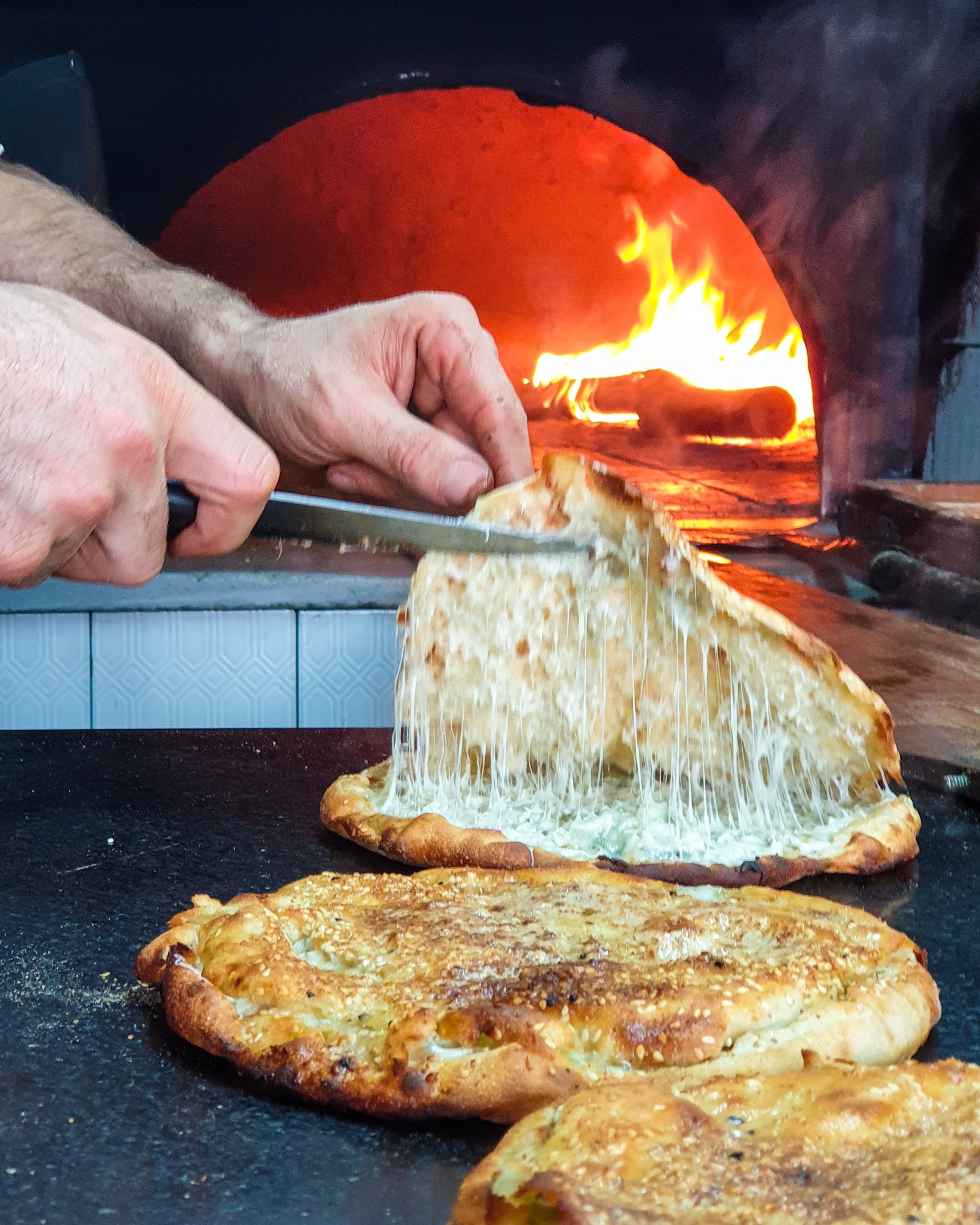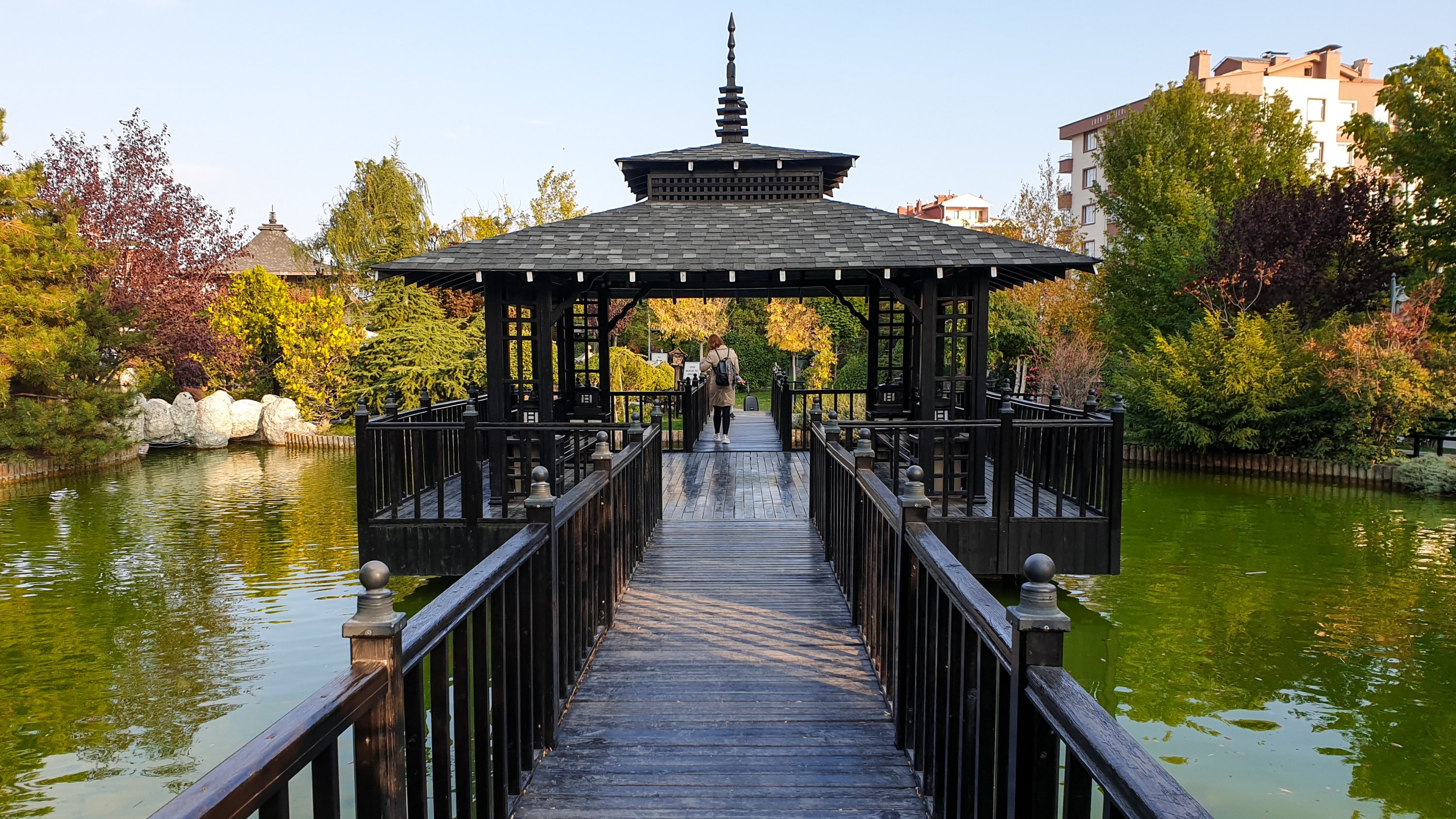© Turkuvaz Haberleşme ve Yayıncılık 2024
On my last day in Konya, I visited two places that I never expected to run into in Turkey’s most prominent city for religious tourism. I also tasted a Konya specialty, the taste of which still lingers in my mouth weeks later.
Breakfast at Hasan Şendağlı Yağ Somunu

Before I commenced my itinerary for the day, I decided to grab a quick bite at Konya's Grand Bazaar. Prior to my arrival in Konya, I did substantial research on the city's food, and on my third day, the only local specialty that had been left uncrossed on my list was yağ somunu.
As I was asking the shop owners in Grand Bazaar about the most authentic place to try the dish, a middle-aged local named Ismail Bey who was passing by approached me and offered to take me to a restaurant famous for its yağ somunu.
The restaurant was surprisingly close as we only had to walk for a minute after passing the Aziziye Mosque before I was told that we had arrived at our destination: Hasan Şendağlı Yağ Somunu Shop.
Yağ somunu is an indispensable element of a traditional Konya breakfast. Since 1944, the Şendağlı family has been serving the most popular yağ somunu in the city. So, what is so special about this acclaimed Konya dish? The very first yağ somunu was a simple meal in the form of a round yeast-risen bread, baked with a huge lump of butter stuffing. Throughout the years, however, the recipe has changed, and the current owner of the shop, Hasan Şendağlı, offers three different kinds of yağ somunu that he created. The most popular one is filled with Konya blue cheese, and upon request, this dish can also be served with a stuffing of pastrami or kavurma (cubes of lamb meat fried in their own fat). In the shop, I had the opportunity to speak with Ismail Bey’s cousin, who works there. He described the three basic steps for preparing the delectable dish:
1 – Knead the dough into a round, flattened shape and bake it in a wood-burning oven.
2 – Slice off the top of the partially baked bread, fill the bread with cheese and put it back into the oven.
3 – Top it with sesame seeds and butter, and bake for another four minutes.
Ismail Bey’s cousin was a polite and helpful young man who told me a great deal about the history of the dish and the way they run the place. He explained that running the business is so important to them that every day, without exception, they arrive at the shop at 5:30 a.m., before the first signs of daylight start appearing in the sky. They start by preparing the dough fresh and, later on, fire up the wood oven and prepare the ingredients of the dishes they serve.
After eating up our delicious yağ somunu, I asked the staff for the bill. Ismail Bey chuckled in a friendly manner and told me that I am a guest, so there is no chance he would allow me to pay. What ensued next was some typical Turkish banter over the bill, and as per custom, I lost and Ismail Bey won. He wished me safe travels, and we parted ways.
Konya Tropical Butterfly Valley
After a greatly satisfying culinary experience, I hopped in a cab and headed to the Konya Tropical Butterfly Valley. The taxi driver, Metin Bey, was a former imam who had led a large congregation in Konya for 35 years and so, fortunately, was very talkative. The 20-minute drive from Konya to the Butterfly Valley was full of interesting conversations about many topics from Konya’s tourism to the pandemic.
“Before, it was mostly locals or tourists from Muslim countries who visited Konya. The variety of people who came here was limited. However, in the last two or three years, I have started seeing many visitors from European countries like England, Germany and the Netherlands. It’s good to witness that Konya’s beauties are now being appreciated by a wider audience. It was only two days ago that I drove a couple from Brazil who had come to spend four days in Konya,” Metin Bey said.
When we reached the destination, he bid me farewell and wished me good luck with a brief piece of advice: “My son, never let anything affect your well-being.”
Considered the largest butterfly collection in Europe, covering a total area of 7,600 square meters (1.88 acres), for me, Konya Tropical Butterfly Valley was the most unexpectedly delightful site in the city. The moment I entered the place, I was awestruck by the butterflies, some as big as my palm, flying among the plants.
Since I was the only one there on account of it being a Wednesday morning, I felt like I was in a fantasy world or a movie set.
The butterfly valley houses 15 different species of butterflies and 98 species of plants. The interior of the structure has been designed as a greenhouse. It felt like I was walking in an Amazon rainforest. Inside the temperature is set at 28 degrees Celsius (82.4 degrees F) to create an ideal environment for the butterflies. As such, the humidity inside the greenhouse is very high. It’s best to wear something light inside your jacket if you go during the winter for you will surely be drenched in sweat otherwise.

With the sounds of the rainforest broadcast from the speakers of the butterfly valley, I found myself sitting on a bench and relaxing with the butterflies fluttering around me.
You can visit the Konya Tropical Butterfly Valley every day, except Mondays, from 9 a.m. to 5 p.m. The entrance fee is TL 7.50 ($1) for students and TL 17.5 for adults.
Kyoto Japanese Park
Japan in Konya? Yes, that’s right. The Kyoto Japanese Park is a beautiful botanical garden located just a bit outside the city where you feel like you have been teleported from Konya to Kyoto. After visiting the butterfly valley, I took another cab, this time to the Kyoto Japanese Garden.
My first impression of the park came down to one all-encompassing, simple expression: “Wow.” Upon stepping inside and looking around, at first glance, I couldn’t help but be amused that of all the places I visited in Turkey, it was Konya that would surprise me the most with its awe-inspiring sites. In this park, you can find almost all characteristic elements of a Japanese garden: gazebos, ponds, thousands of huge goldfish, niwaki (Japanese for garden trees), wooden bridges and lanterns, stone paths and colorful flowers. In addition to this, there is also a cafe, built in a Japanese architectural style and abutting the big lake in the park, where you can grab a quick bite and enjoy a beverage.

Kyoto Japanese Park was built in 2010 to honor the good relations between Konya and its “sister” city of Kyoto. The park can be visited every day from 8 a.m. to 11:30 p.m.
So, friends, as I write my last article for this hectic year that 2020 has been, I hope I could inspire you to add some of these beautiful sights in Turkey to your New Year’s resolutions list. I wish you all a happy, prosperous and, most importantly, healthy year in 2021 with your loved ones. Stay safe and Happy New Year!
